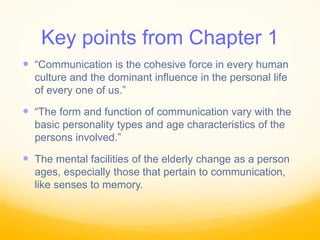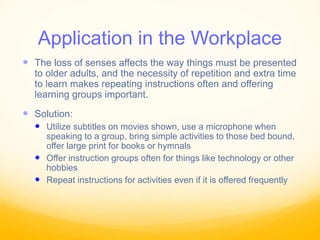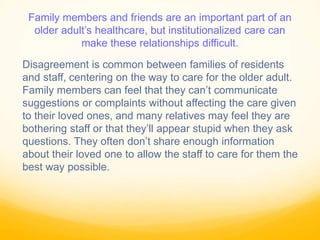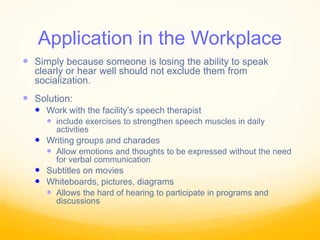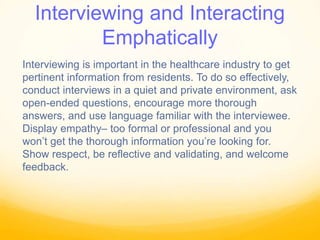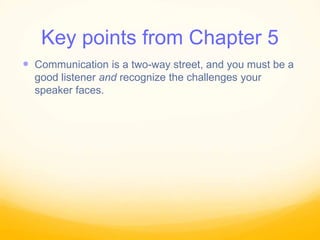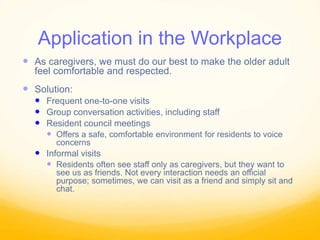The document discusses communication with the elderly and outlines several key challenges and strategies. It notes that communication is important for health but declines with age due to sensory and cognitive changes. Barriers include hearing loss, vision loss, and speech/language difficulties. However, activities like social groups, one-on-one visits, and assistive tools can help overcome challenges and promote interaction. The document stresses the importance of listening skills, making elders comfortable, and finding ways for them to communicate effectively.


